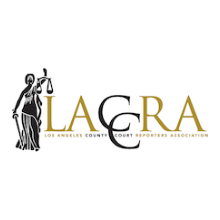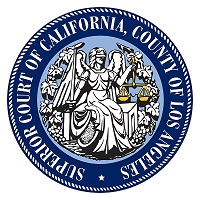Student Career BrochureClick here to download brochure. If you’re looking for an interesting and lucrative career, court reporting could be the job for you. Court reporters — also known as certified shorthand reporters (CSRs) — are highly trained, licensed professionals who transcribe spoken words using a stenotype machine in a wide variety of settings – not just in court. CSRs fill a critical role in the justice system: They provide verbatim transcripts of judicial proceedings and ensure that nothing compromises their accuracy. Court reporters are present in court hearings, trials, and other litigation-related sessions such as depositions. But opportunities in this field go beyond the courtroom. Opportunities and BenefitsIt’s an exciting time for CSRs. According to the U.S. Bureau of Labor Statistics, employment for them will grow by 18 percent between 2008 and 2018, reflecting the demand for real-time broadcast captioning and translating. This growth rate is faster than the average for all occupations in that time period. Broadcast captioners, also called stenocaptioners, use court reporting skills on the stenotype machine to caption live television programs for deaf and hard-of-hearing viewers with software that instantly displays speech as text so it can be read immediately. This includes news, emergency broadcasts, sports events, and more. Court reporters use the same process for webcasts, instantly transmitting captions to the computer screens of all parties via the Internet. The stenotype machine enables court reporters to write words using a letter or a combination of letters to represent a sound, a word, or a phrase. This allows them to write text much faster than on a standard computer keyboard. In addition, the skills gained on the stenotype machine may prepare you for other career options such as:
Court reporting schools offer shorthand machine theory and speed-building classes that prepare students for the state licensing exam. They also offer intensive instruction in English grammar, punctuation, spelling and word usage, legal and medical terminology, deposition and court procedures, computer-aided transcription programs and current California laws related to court reporting. The English education and legal and medical terminology may provide other career options or a foundation for pursuing higher education. CSRs can be independent contractors or run their own firms. Work hours are usually flexible and transcription is often performed at home. Annual salaries range from $30,000 to $100,000 or more, based on how much you want to work and where you live. Incomes can average more than $60,000 a year, according to the National Court Reporters Association. What it takesBecoming a licensed CSR requires passing a three-part licensing exam, usually after attending a State-approved court reporting school. Having an out-of-state license or appropriate work experience can also qualify you for the exam. CSR school programs are designed to take three to four years. Courses are self-paced, challenging, and require self-discipline and a high degree of motivation. The curriculum is largely skills-based, and practice builds speed levels required to take the licensing exam, which requires 200 words per minute with a 97.5 percent accuracy rate. Academic homework is also required. So, court reporting school is a full-time job — for a while. Here are the minimum requirements to graduate:
Choosing a SchoolBefore enrolling in a court reporting program, do your research. Start by talking to staff at prospective schools, particularly admissions counselors. Smaller schools without this role may put you in touch with an actual teacher. Here are some questions you should ask:
In addition, talk to staff at local deposition firms: Ask their opinions about prospective schools. Try to job shadow current CSRs: Sit in a courtroom and observe the reporter working. See if they’re open to questions at breaks. Considering CostsCalculate the costs for attending the average length of time, as well as the longest length of time, at each prospective school. Be sure to ask the school about financial aid. If you are attending a private court reporting school, ask school officials if they provide a regular accounting statement of the financial aid checks and an itemization of where the money goes. Ask school officials what the policy is for communicating increased indebtedness and whether students are notified when approaching the end of financial eligibility. Remember that any student loans incurred are real loans — meaning they have to be paid back — whether or not you finish school. Research the costs of equipment and software. When your research is finished, enroll in the school that offers complete answers to all your questions and is properly accredited. Other ResourcesAlso visit: California Court Reporters Association Deposition Reporters Association of California More questions? Court Reporters Board of California You can also call the Bureau for Private Postsecondary Education (BPPE) at (916) 574-7720; www.bppe.ca.gov. |




